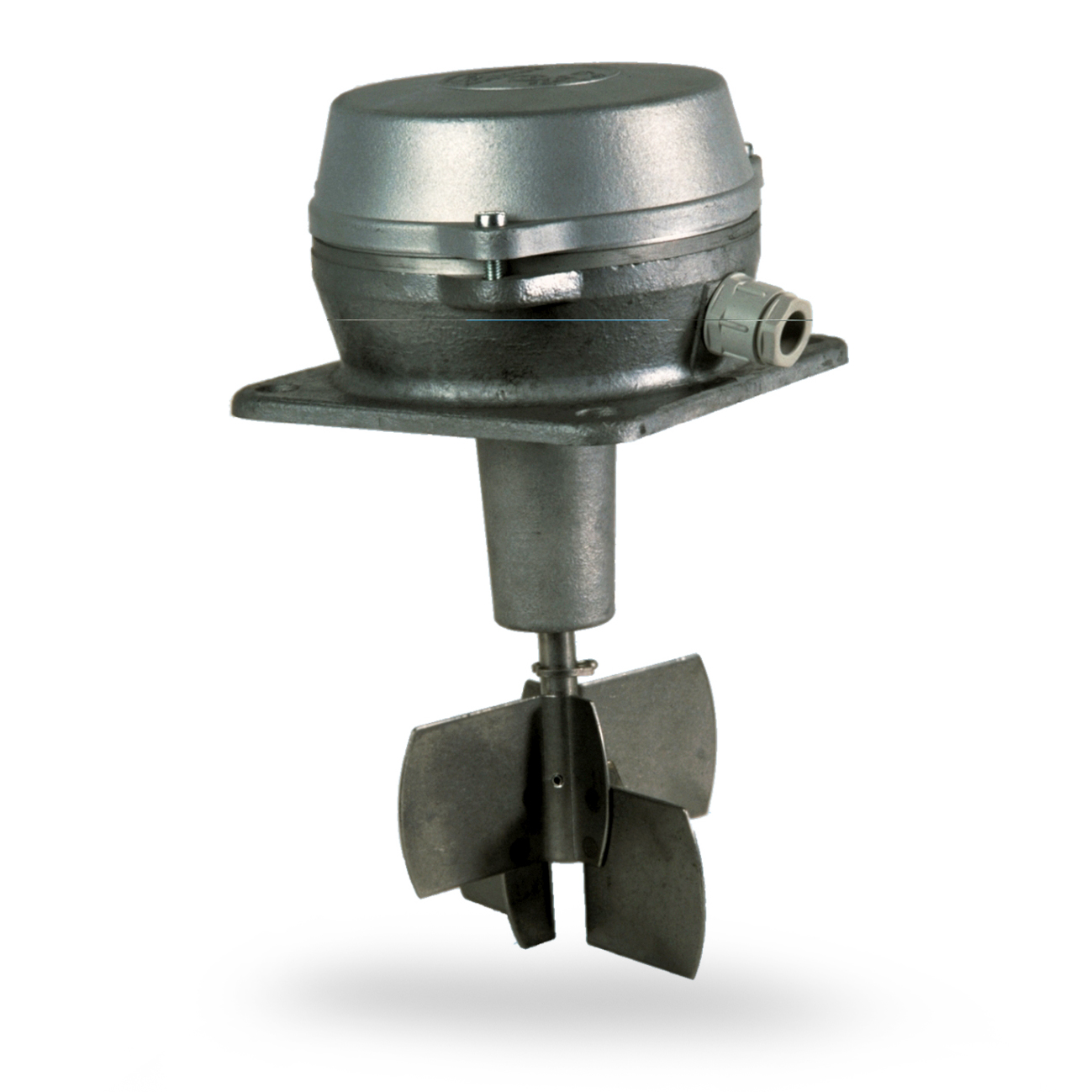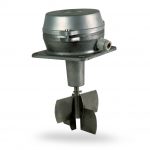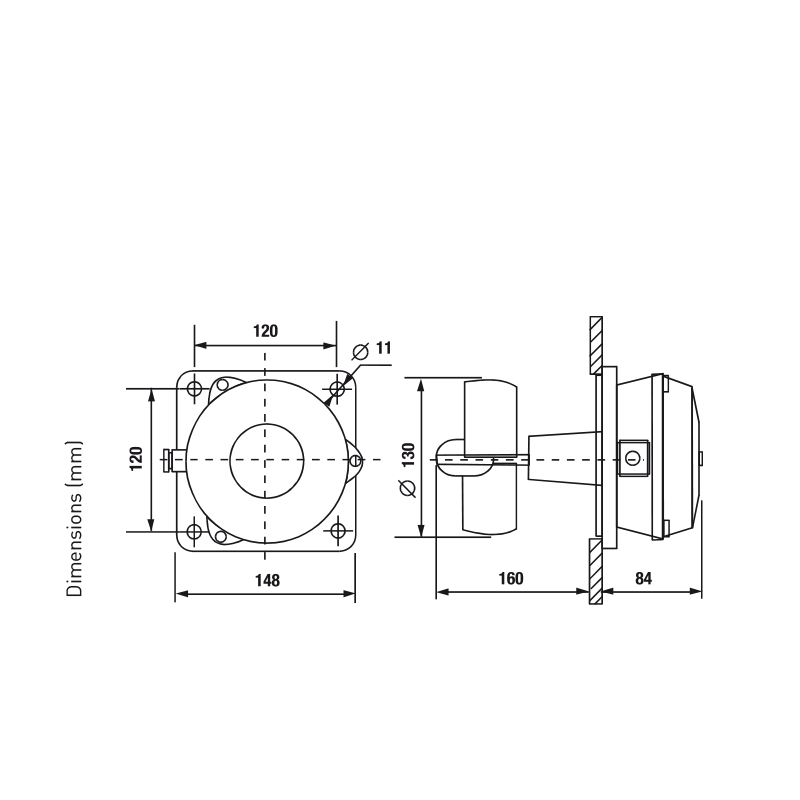Bladed level controls for powders and granules
-
DESCRIPTION
General features0
Suitable to control the level of powders and granules in storages or tanks, for high and low level signalling, for transporter control, for feeders, etc.
- Aluminium alloy body.
- Stainless steel 4-blade propeller.
- Clutch shaft mounted on sealed ball bearings.
- Output connections with shockproof thermoplastic cable gland G 1/2” .
- Storage and transport temperature: -25 ÷70°C.
- Unit weight: 2.2 Kg.
Electric features- Synchronous motor: 4.5VA, supply voltage 230Va.c. 50Hz.
- 2 SPDT microswitches : one for motor control, one for operation.
- Rated insulation voltage Ui 380V~
- Continuous duty rated current Ith 10A
-
ADVANTAGES
0
Suitable to control the level of powders and granules in storages or tanks, for high and low level signalling, for transporter control, for feeders, etc.
Advantages -
TECHNICAL SPECIFICATION
CODE LEVEL DIFFERENTIAL POWER SUPPLY OPERATING TEMPERATURE PROTECTION DEGREE ASE fixed 50 mm 230 Vac -20 ÷ 80 °C IP54 -
HOMOLOGATION AND INSTALLATION
Homologation
- Complies with CEI- EN 60947-5-1 standards.
Installation and use- Flange connection suitable for horizontal and vertical installation.
- It is recommended to install ASE away from storages loading places and away from the presence of materials with high specific gravity, protecting by a reflective device the shaft and the propeller.
MAXIMUM LEVEL
- Device installation usually is carried out on the head side of the tank.
MINIMUM AND MEDIUM LEVEL
- Usually, the device is mounted horizontally.
- For small tanks, extending axle you can mount as well on the head side.
- For lightweight materials and fluids are used screws with large blades. For large sizes materials are required screws with flexible blades.
- Elements, that determine the operation are the synchronous motor and its torque.
- The material impedes propeller rotation to a stop.
- Suitable to control materials (such as granules and powders) with a specific gravity of approximately 0,7 kg/dm³.
- When the material hampers the screw rotation, the electric motor with the force of its torque acts on the microswitch, which closes or opens the electrical circuit (24 ÷ 280Vac 10A) while the second microswitch shuts down the motor disconnecting the power supply.
- Reducing the level, the propeller is released and through the return spring the motor and microswitches automatically pass into the initial position.
- N.B. If you want to use for control a second microswitch, used voltage should be the same with motor’s supply voltage.
- TECHNICAL LITERATURE
-
FAQS







